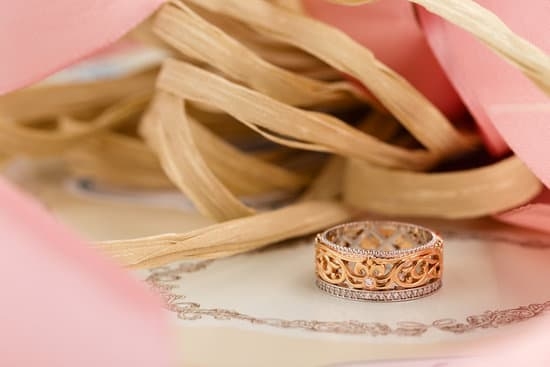Fashion jewelry has become increasingly popular, captivating individuals with its unique designs and versatile styles. With an abundance of options available, one may often wonder: what is fashion jewelry made of? This article aims to delve into the intricacies of fashion jewelry materials, providing insight into the diverse range of components used in its creation.
As fashion jewelry continues to gain allure and recognition, it is crucial to understand the materials that contribute to its aesthetic appeal. From metal alloys like bronze, pewter, and stainless steel to gemstones such as cubic zirconia and crystals, a wide variety of materials are utilized in fashion jewelry. Additionally, plastic, acrylic, and resin play a significant role in bringing creative and affordable pieces to life.
Furthermore, this article will explore how precious metals enhance the elegance of fashion jewelry. Sterling silver remains a prevalent choice for its timeless charm, while gold-plated and gold-filled pieces exude luxury without breaking the bank. The allure of vermeil jewelry further demonstrates the influence of precious metals in creating exquisite and high-quality adornments.
Unveiling the Diversity
Fashion jewelry is known for its affordability, versatility, and ability to emulate high-end designs. One of the key elements that contribute to its appeal is the wide range of materials used in its creation.
From metal alloys to gemstones, plastic to fabric, fashion jewelry offers endless possibilities for self-expression and style. In this section, we will explore some of the most common materials used in fashion jewelry, shedding light on their characteristics and why they are favored by designers.
Metal Alloys: Bronze, Pewter, and Stainless Steel
One prevalent category of materials used in fashion jewelry is metal alloys. These alloys provide durability while remaining affordable compared to precious metals like gold and silver. Bronze, pewter, and stainless steel are particularly popular choices.
Bronze has been utilized in jewelry making for centuries due to its warm tones and patina that develops over time. Pewter, on the other hand, offers a versatile grayish color that complements many different styles. Stainless steel is highly regarded for its resistance to tarnish and corrosion.
Gemstones: Cubic Zirconia and Crystals
Another significant component of fashion jewelry is the use of gemstones. While natural gemstones can be expensive, designers often employ more affordable alternatives like cubic zirconia (CZ) and crystals to achieve a similar effect without breaking the bank. CZ stands out as an excellent substitute for diamond due to its brilliance and remarkable clarity. Additionally, crystals such as Swarovski crystals are widely sought after for their dazzling sparkle and vibrant colors.
Plastic, Acrylic, and Resin
In recent years, there has been a surge in the popularity of plastic-based materials like acrylic and resin in fashion jewelry. These materials offer endless possibilities when it comes to shapes, sizes, and colors. They allow designers to create bold statement pieces that can be lightweight yet visually striking. Plastic-based materials also make fashion jewelry more accessible and affordable for a wider range of consumers.
A Touch of Elegance
Introduction:
The world of fashion jewelry is a treasure trove of materials, each with its unique allure and charm. From sparkling gemstones to unconventional materials, fashion jewelry offers endless possibilities for self-expression and style. In this section, we will delve into the realm of precious metals in fashion jewelry, uncovering the elegance they bring to any outfit.
Delving into Precious Metals:
One common material used in fashion jewelry is sterling silver. Known for its timeless beauty and versatility, sterling silver adds a touch of sophistication to any piece. It can be found in various forms such as chains, earrings, and rings. With proper care, sterling silver jewelry can withstand everyday wear and maintain its shine for years.
Another popular choice is gold-plated and gold-filled jewelry. These pieces have a layer of gold applied to them through a process called electroplating or mechanical bonding respectively. Gold-plated jewelry offers a luxurious look at an affordable price point, while gold-filled jewelry contains a thicker layer of gold and is more durable.
Vermeil jewelry combines the elegance of precious metals with the affordability of fashion jewelry. Vermeil refers to pieces made from sterling silver coated with a thick layer of gold (typically 10 karats or higher). This technique produces stunning results that are both glamorous and accessible.
| Precious Metal | Description |
|---|---|
| Sterling Silver | An alloy containing 92.5% silver and 7.5% other metals |
| Gold-Plated | A layer of gold applied to base metal through electroplating |
| Gold-Filled | A layer of gold bonded mechanically to base metal |
| Vermeil | Sterling silver coated with a thick layer of gold |
The use of precious metals in fashion jewelry adds elegance and sophistication to any ensemble. Whether it’s the timeless beauty of sterling silver, the affordability and luxury of gold-plated or gold-filled pieces, or the allure of vermeil jewelry, these materials bring a touch of glamour to every wearer. In the next section, we will explore the world of gemstones in fashion jewelry and discover their captivating beauty.
The Sparkling World
Gemstones have been used in jewelry for centuries, adding a touch of elegance and luxury to any piece. In the world of fashion jewelry, gemstones continue to play a significant role, allowing individuals to incorporate the beauty and allure of precious stones into their everyday style. From classic options like turquoise and amethyst to more affordable alternatives like cubic zirconia, the use of gemstones in fashion jewelry offers endless possibilities.
One popular gemstone often seen in fashion jewelry is turquoise. Known for its vibrant blue-green color, turquoise adds a pop of color and bohemian flair to any outfit. Whether it’s set in a necklace, bracelet, or ring, turquoise is a versatile gemstone that can be easily incorporated into various styles. Its natural variations in color and pattern also make each piece unique.
Amethyst is another gemstone commonly used in fashion jewelry. With its deep purple hues, amethyst brings a sense of elegance and sophistication to any ensemble. Often seen as an accent stone or featured as a centerpiece in statement pieces, amethyst adds a touch of luxury without overpowering the overall design.
For those looking for more affordable options, cubic zirconia is an excellent choice. This synthetic gemstone closely resembles the look of diamonds but at a fraction of the cost. Cubic zirconia comes in various colors and sizes, making it easy to find the perfect piece to suit any individual’s style.
| Gemstone | Color | Meaning/Properties |
|---|---|---|
| Turquoise | Blue-green | Protection and healing |
| Amethyst | Purple | Spirituality and calming energy |
| Cubic Zirconia | Various (often colorless) | Affordability and versatility |
The use of gemstones in fashion jewelry not only adds visual appeal but also allows individuals to connect with the unique meanings and properties associated with each stone. Whether it’s incorporating turquoise for protection, amethyst for spiritual healing, or simply choosing a favorite color, gemstones offer a world of possibilities when it comes to fashion jewelry.
Beyond Expectations
Unconventional Materials: Wood and Leather in Fashion Jewelry
In the world of fashion jewelry, materials can go beyond the traditional realms of metal and gemstones. Designers have been exploring the use of unconventional materials to create unique and eye-catching pieces. One such material is wood, which adds a natural and rustic touch to jewelry designs.
From wooden beads to carved pendants, wood can be incorporated in various forms in fashion jewelry. Not only does it provide a distinct aesthetic, but it also offers lightweight options for those seeking comfortable accessories.
Another unconventional material making its mark in fashion jewelry is leather. Leather has long been associated with luxury and style, and its incorporation in jewelry adds an edgy and fashionable element. Leather bracelets, necklaces, and earrings can bring a bold statement to any outfit. Additionally, leather can be combined with metals or gemstones for a more intricate design. The versatility of leather allows for endless possibilities when it comes to creating unique and unconventional fashion jewelry pieces.
Fabric, Silk, and Ribbon: Versatility meets Elegance
Fashion jewelry is not limited to metallic or stone components – fabric, silk, and ribbon play an important role in adding elegance and softness to jewelry designs. These materials offer versatility in terms of color choices, textures, and patterns. For instance, fabric wrapped around metal hoops or beads can create a bohemian-inspired look that is both trendy and chic.
Silk is another material that brings a luxurious touch to fashion jewelry. Delicate silk cords or tassels can be used as necklace chains or earring accents, adding a refined elegance to any piece. Similarly, ribbons offer endless potential for creativity – they can be woven into braided bracelets or tied into bows as charming details on necklaces or earrings.
Creativity through Recycling: Upcycled Materials in Fashion Jewelry
In recent years, there has been a growing emphasis on sustainability and reducing waste in the fashion industry. This movement has also influenced the world of fashion jewelry, with designers utilizing recycled and upcycled materials to create unique and eco-friendly pieces. For instance, discarded bottle caps can be transformed into colorful pendants, while old vinyl records can find new life as statement earrings.
By repurposing materials that would otherwise end up in landfills, designers are not only creating fashionable accessories but also promoting environmental consciousness. Upcycled fashion jewelry allows individuals to make a style statement while contributing to a more sustainable future.
With all these unconventional materials available in fashion jewelry, the possibilities for creating distinctive and personal pieces are endless. Whether it’s wood, leather, fabric, or recycled materials, embracing these unconventional elements opens up a world of creativity and self-expression through jewelry. Fashion enthusiasts can explore these unique materials to find pieces that truly reflect their individuality and style.
The Art of Imitation
The world of fashion jewelry is filled with stunning pieces adorned with beautiful gemstones. However, not all of these gemstones are natural or precious. In fact, many fashion jewelry pieces feature simulated stones that mimic the appearance of their natural counterparts. Understanding simulated stones and their role in fashion jewelry is essential for any jewelry enthusiast.
Simulated stones are laboratory-made or synthetic gems that replicate the look of natural stones. They are designed to imitate the color, clarity, and brilliance of genuine gemstones like diamonds, emeralds, and sapphires. One popular example of a simulated stone is cubic zirconia (CZ), which closely resembles a diamond in terms of its sparkle and shine.
The use of simulated stones in fashion jewelry offers several advantages. Firstly, they are often more affordable than natural gemstones, making them accessible to a wider audience. Additionally, using simulated stones allows for creative design possibilities and flexibility in the manufacturing process. Jewelry designers can experiment with different colors and shapes without worrying about the high cost or limited availability often associated with natural gemstones.
However, it is important to note that simulated stones should not be confused with fake or counterfeit gems intended to deceive buyers. Simulated stones are crafted with precision and attention to detail to create convincing imitations but without claiming to be genuine. They offer an ethical alternative to mined gemstones and can provide an affordable option for those who desire the look of fine jewelry without breaking the bank.
Breaking Barriers
In the ever-evolving world of fashion jewelry, designers are constantly pushing the boundaries of creativity by incorporating new materials and innovative techniques into their designs. This section explores some of the breakthroughs in material choices that have been making waves in the industry.
Exploring modern materials
One of the notable developments in fashion jewelry is the use of modern materials such as titanium and tungsten. These metals offer exceptional durability and strength, making them popular options for contemporary jewelry pieces. Titanium jewelry, known for its light weight and hypoallergenic properties, has gained popularity among those with sensitive skin. On the other hand, tungsten jewelry is renowned for its scratch-resistant nature and lasting shine.
Apart from metals, natural materials like shells, bone, and horn have also found their way into fashion jewelry designs. The unique textures and colors they possess add an organic touch to accessories. Designers often combine these materials with metal or gemstones to create elegant yet unconventional pieces that make a statement.
Some avant-garde designers have even incorporated cutting-edge materials like carbon fiber into their creations. Known for its strength-to-weight ratio and sleek appearance, carbon fiber adds a contemporary edge to traditional jewelry designs.
The allure of sustainability
In recent years, there has been an increasing emphasis on sustainability in various industries, including fashion. Fashion jewelry is no exception, with brands embracing eco-friendly practices by using recycled metals and ethically sourced gemstones.
Recycled metals like recycled silver and gold are gaining popularity as conscious consumers seek out sustainable alternatives. These metals are obtained from existing sources rather than extracting new raw materials from the earth, reducing environmental impact.
Ethically sourced gemstones are another aspect of sustainable fashion jewelry. By ensuring that gemstones are mined under fair labor conditions and without contributing to illegal activities or human rights abuses, designers can create pieces that align with ethical values. Additionally, lab-grown gemstones, which have a minimal carbon footprint compared to their naturally mined counterparts, are also emerging as sustainable alternatives in fashion jewelry.
Embracing the future
As the world of fashion jewelry continues to evolve, it is exciting to see how designers will further break barriers and explore new materials. From unconventional options like wood and leather to cutting-edge innovations like 3D-printed jewelry, the possibilities seem endless.
By embracing innovation and sustainability, fashion jewelry designers can create pieces that not only captivate through their design but also contribute positively to the overall industry. As consumers become more conscious of their choices, the demand for unique, sustainable materials in fashion jewelry continues to grow.
With each new material introduced into the realm of fashion jewelry, we witness the unfolding of a world where artistry meets innovation. Breaking barriers and reinventing designs through new materials not only keeps the industry dynamic but also offers consumers an array of choices that suit their personal style and values. Embrace this exciting journey as you explore the fascinating world of fashion jewelry materials.
The Blend of Art and Fashion
Introduction:
Handmade jewelry holds a special place in the fashion industry, with its unique craftsmanship and artistic expression. In this section, we will delve into the blend of art and fashion through handmade craftsmanship in fashion jewelry. From wire wrapping to beading, traditional techniques are celebrated for creating one-of-a-kind pieces that showcase the skill and creativity of artisans.
The Artistry of Handmade Fashion Jewelry:
One of the defining characteristics of handmade fashion jewelry is the artistry involved in its creation. Skilled artisans meticulously craft each piece, ensuring attention to detail and an individual touch. Techniques such as wire wrapping, where wires are intricately wound around gemstones or beads, add depth and complexity to the design. Beading, another popular technique, involves carefully stringing together beads to create visually stunning patterns.
Unique Expressions:
Handmade fashion jewelry allows designers and artisans to express their unique visions and creativity. Each piece becomes a wearable work of art that reflects personal style and tells a story. By embracing handmade craftsmanship, individuals can discover pieces that truly resonate with their personality and aesthetic preferences.
| Technique | Description |
|---|---|
| Wire Wrapping | Technique where wires are intricately wound around gemstones or beads |
| Beading | Carefully stringing together beads to create patterns |
Conclusion:
Handmade craftsmanship adds a layer of uniqueness and artistry to fashion jewelry. By incorporating traditional techniques like wire wrapping and beading, artisans create one-of-a-kind pieces that reflect personal style while showcasing their skill. Embracing handmade fashion jewelry allows individuals to express their individuality and connection with wearable works of art.
The Environmental Aspect
The fashion industry has seen a rise in the demand for sustainable and eco-friendly practices, and the world of fashion jewelry is no exception. In this section, we will delve into the environmental aspect of fashion jewelry materials, exploring how brands and designers are embracing sustainability in their creations.
One way that the fashion jewelry industry is becoming more environmentally conscious is through the use of recycled metals. Instead of relying solely on newly mined metals, many artisans are turning to reclaimed materials to create their pieces. By using recycled metals like silver or gold, they reduce the demand for mining activities and minimize their environmental impact.
Another important aspect of sustainable fashion jewelry materials is ethically sourced gemstones. Traditional mining practices can often have devastating effects on local communities and ecosystems. However, there are now initiatives in place to ensure that gemstones are extracted responsibly and with fair labor practices. Brands are increasingly sourcing gemstones from mines that adhere to ethical standards, ensuring that workers are treated fairly and ecosystems are protected.
In addition to recycled metals and ethically sourced gemstones, designers are also exploring alternative materials in order to reduce their carbon footprint. For example, some brands are experimenting with innovative materials like bio-resin or plant-based plastics as alternatives to traditional plastics or acrylics. These alternatives offer similar durability and aesthetic appeal while being more eco-friendly and sustainable.
By embracing sustainable practices in fashion jewelry materials, brands and designers can contribute to a cleaner and greener future for the industry. As consumers become more conscious about their environmental impact, they can make informed choices by supporting these eco-friendly initiatives. Ultimately, with a focus on sustainability, fashion jewelry can continue to be a symbol of beauty without compromising our planet’s well-being.
The Verdict
When it comes to fashion jewelry, the material plays a significant role in determining its overall look, durability, and suitability for different occasions. With countless options available, choosing the perfect material can be overwhelming. However, by considering your personal style, skin sensitivity, and budget, you can make an informed decision that reflects your unique preferences.
One of the first factors to consider is your personal style. Fashion jewelry allows you to express yourself and showcase your individuality. If you prefer a classic and timeless look, sterling silver and gold-plated jewelry pieces are excellent choices.
Their elegance and versatility make them suitable for both casual and formal settings. On the other hand, if you enjoy bold and statement-making accessories, opt for pieces made with unconventional materials like leather or fabric. These materials add a touch of uniqueness to your ensemble.
Another important consideration is your skin sensitivity. Some individuals may have allergic reactions or sensitivities to certain materials commonly used in fashion jewelry. If you have sensitive skin, hypoallergenic materials like stainless steel or titanium are ideal options as they are less likely to cause irritation or discomfort. Additionally, consider avoiding nickel-based alloys that can trigger allergic reactions in some people.
Budget is also a key factor when choosing fashion jewelry materials. Precious metals like gold and sterling silver tend to be more expensive compared to alternative options such as stainless steel or brass alloys. However, there are variations within each category that offer different price points. For example, gold-filled jewelry provides a more affordable alternative to solid gold while still maintaining its allure and quality.
Ultimately, the perfect fashion jewelry material is one that aligns with your personal style, suits your skin sensitivity needs, and falls within your budget range. It’s essential to remember that there are no strict rules when it comes to accessorizing – embrace the freedom to mix and match different materials according to your preferences.
Whether you opt for traditional metals, unconventional materials, or eco-friendly options, the key is to select pieces that make you feel confident and express your unique personality.
Conclusion
In conclusion, the world of fashion jewelry materials is a remarkable realm filled with endless possibilities. From metal alloys like bronze, pewter, and stainless steel to the glimmering allure of gemstones like cubic zirconia and crystals, fashion jewelry offers a diverse range of options for every style and taste. Precious metals such as sterling silver, gold-plated and gold-filled pieces, and vermeil jewelry add a touch of elegance to any ensemble.
Moreover, the incorporation of gemstones in fashion jewelry adds an element of sparkle and glamour. Whether it’s turquoise, amethyst, topaz, or more affordable yet equally stunning choices like cubic zirconia, these stones enhance the beauty and appeal of each piece.
What sets fashion jewelry apart is its ability to transcend traditional materials. The use of unconventional materials like wood, leather, fabric, silk, ribbon, as well as recycled and upcycled materials showcases the creativity behind fashion jewelry designs. Simulated stones such as emeralds, sapphires, and diamonds allow individuals to enjoy the beauty without compromising on affordability or ethical considerations.
Fashion jewelry continually pushes boundaries with new materials such as titanium and tungsten while embracing natural elements like shells, bone, horn, and even cutting-edge options like carbon fiber. Handmade craftsmanship adds a unique touch to fashion jewelry creations through techniques like wire wrapping and beading.
In this incredible world of fashion jewelry materials lies an environmental aspect. Brands and designers are increasingly adopting sustainable practices by using recycled metals and ethically sourced gemstones. This movement allows individuals to embrace their personal style while making conscious choices that reduce environmental impact.
In summary, exploring the intricate world of fashion jewelry materials reveals a fascinating voyage through countless options. By considering factors such as personal style preferences, skin sensitivity concerns, and budget constraints when selecting materials for fashion jewelry purchases or creations is crucial.
Whatever material one chooses to adorn themselves with should ultimately reflect their unique taste and personality. So, embrace the beauty and versatility of fashion jewelry materials, dive into their diversity, experiment with different options and continue to appreciate the unending possibilities they offer.
Frequently Asked Questions
What is fast fashion jewelry made of?
Fast fashion jewelry is typically made of inexpensive materials such as base metals like copper, brass, or nickel alloys. These materials are usually plated with a thin layer of gold, silver, or other types of metal to give them a more appealing finish.
The gemstones used in fast fashion jewelry are often synthetic or simulated versions that imitate the appearance of real gemstones at a fraction of the cost.
What is artificial jewelry made of?
Artificial jewelry, also known as costume or fashion jewelry, is made from a wide range of materials. It can include anything from plastic and acrylic beads to glass, wood, fabric, and even paper.
Unlike fine jewelry that uses precious metals and gemstones, artificial jewelry focuses more on aesthetic appeal and affordability rather than high intrinsic value. The use of diverse materials allows for endless possibilities in creating unique designs that can easily match various fashion trends.
Does fashion jewelry rust?
Fashion jewelry can be prone to rust depending on the specific metal used and how well it’s been protected against moisture exposure. While certain base metals like copper and brass have inherent corrosion resistance, they may still tarnish over time due to environmental factors like humidity or contact with substances like water, sweat, or cosmetics.
However, with proper care and occasional cleaning using suitable methods (e.g., polishing cloth), rusting can be minimized or prevented altogether in most cases. Plating the metal with a protective coating can also help guard against rust formation by adding an extra barrier between the metal and its surroundings.

Welcome to my jewelry blog! My name is Sarah and I am the owner of this blog.
I love making jewelry and sharing my creations with others.
So whether you’re someone who loves wearing jewelry yourself or simply enjoys learning about it, be sure to check out my blog for insightful posts on everything related to this exciting topic!





